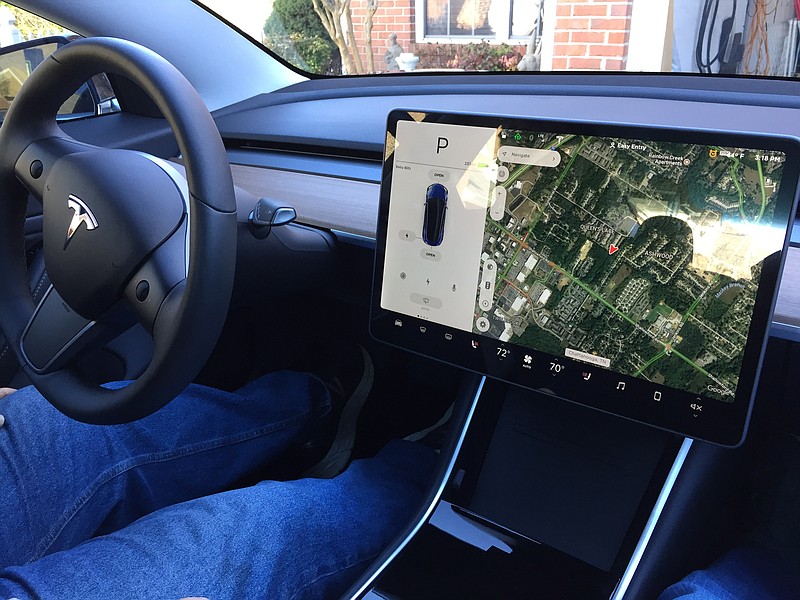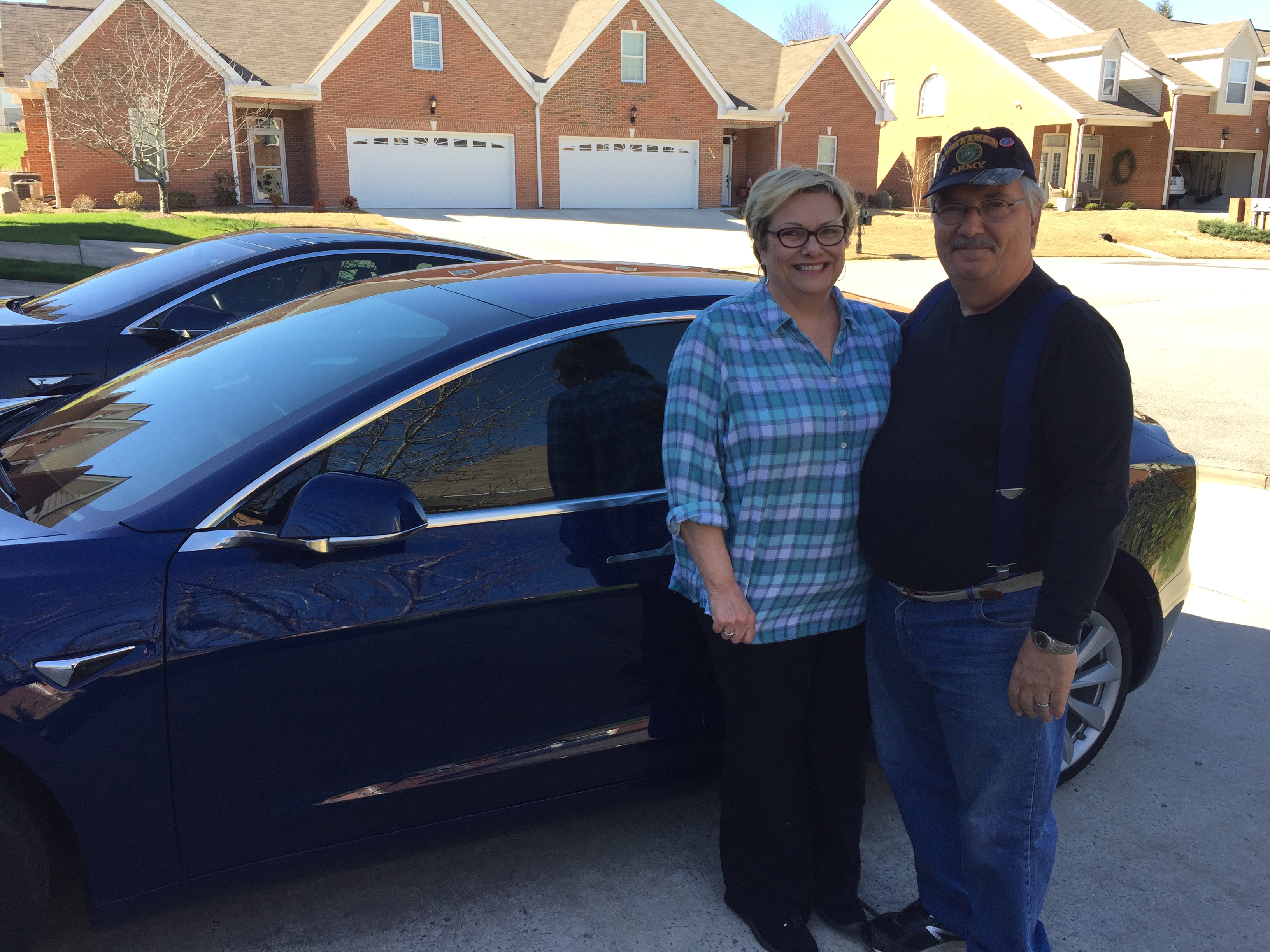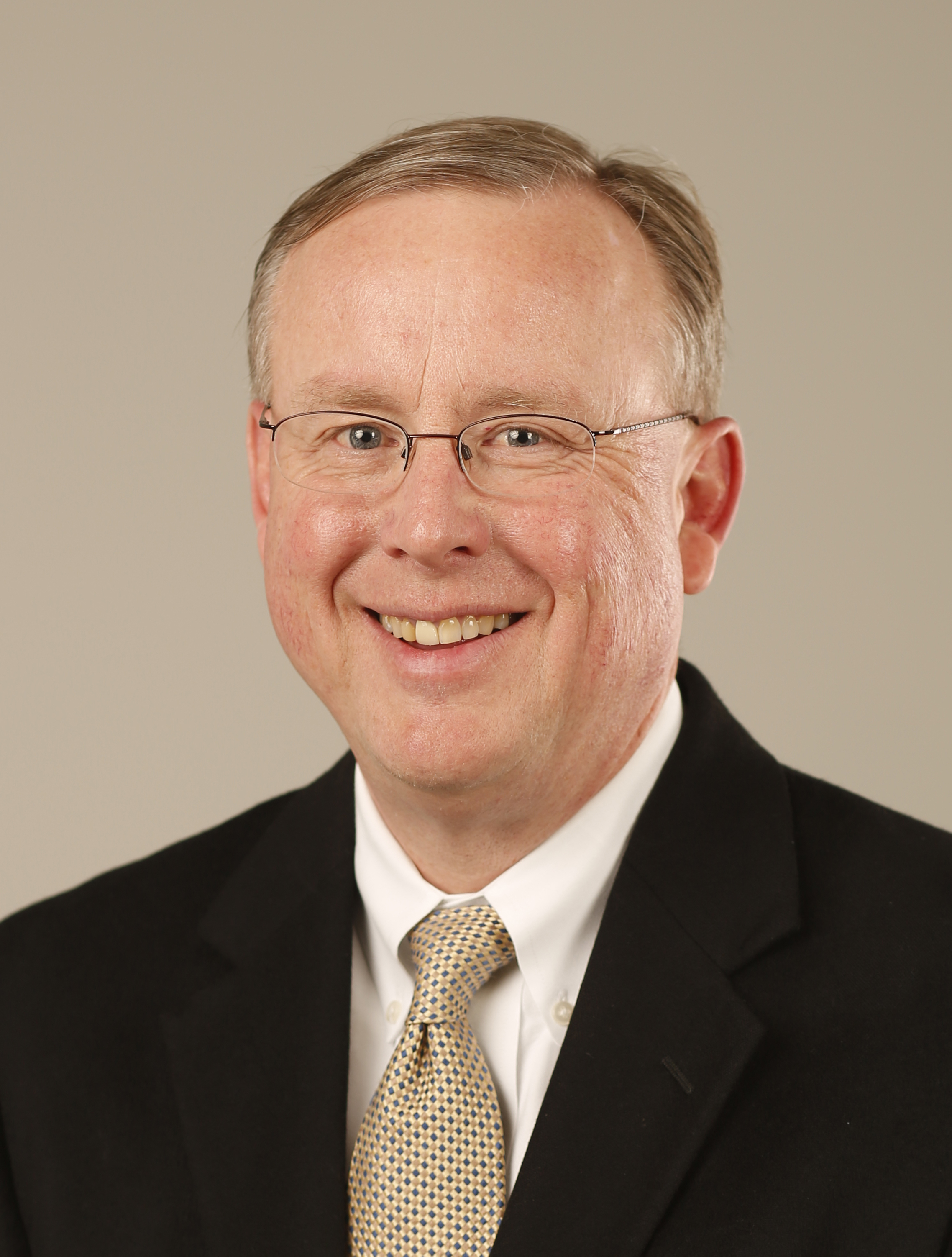Sandy Monk, of Chattanooga, is the proud owner of a semi-autonomous car.
Her new Tesla Model 3, the latest electric car from the American automaker, can hold its line on a freeway and even change lanes without human hands touching the steering wheel.
View other columns by Mark Kennedy
"I like the autopilot a lot," Sandy says. "But it's scary. ... I still don't trust it completely."
The Tesla Model 3 has been billed as a futuristic car for the masses. Tesla CEO and co-founder Elon Musk has said that Tesla automobiles will one day be able to drive from California to New York without human input.
With a ballyhooed base sticker price of just $35,000, the Model 3 is supposed to do for electric cars what Ford's Model T did to popularize gasoline-powered automobiles in the first decades of the 20th century.
Sandy and her husband, Charles "Chip" Monk, were Tesla early adopters. Chip bought a more expensive Tesla Model S sedan back in 2013. Now his Model S has 119,000 miles on the odometer and it's still going strong, he said.
When news broke that Tesla was making a lower-priced model, the Monks were among the first in line to put down
a deposit. Specifically, they were the 74th customers in a line of 144 people at the Tesla dealership in Marietta, Ga., on March, 30, 2016, Chip Monk says.
When it came time to replace her aging Nissan Altima, Sandy says she wasn't convinced she even wanted a Model 3. But Chip told her he would sell the Tesla after 90 days if she didn't like it.
Well, now, after only about a month of ownership, the verdict is in.
"I think I'll keep it," Sandy announced this week.
About 400,000 customers have put down $1,000 deposits to buy new Model 3s, but only a tiny percentage of that number have actually taken delivery of their cars.
Bloomberg reported recently that Tesla hopes to ramp up production of the Model 3 to 5,000 units per month this summer, and some of those first-day depositors from 2016 have been told it still might be the end of 2018 before their cars arrive.
The Monks' Model 3 came equipped with the hardware for fully-autonomous operation, but the software is not yet available. For now, they are captivated by an enhanced autopilot function that, according to Tesla, allows the car to "match speed to traffic conditions, keep within a lane, automatically change lanes without requiring driver input, transition from one freeway to another and exit the freeway when your destination is near."
How does it work?
According to Tesla, eight cameras sweep through all 360 degrees of visibility around the vehicle at a radius of 250 meters. Twelve ultrasonic sensors search out "hard and soft objects" the car might encounter. On top of that, a radar system, capable of piercing heavy rain and fog, assists the navigation.
Still, it takes courage to let the Tesla take some control of the car's steering and braking. The sensation may never come naturally to current drivers, but few dispute that fully autonomous cars are on the horizon.
Unlike the Model S, with its long, sleek lines, the Model 3 looks more like a normal compact car, albeit with a second "trunk" under the hood where you'd expect a gas motor to be. Tesla's electric motors are small and positioned near the wheels.
Inside is where things get interesting. Instead of a cluster of dials and gauges, the Model 3 has a large horizontal touch-screen mounted to the middle of an uncluttered dash.
The Monks paid for most of the available upgrades on their new Model 3, pushing the base price from around $35,000 to almost $60,000 - hardly a bargain-basement sedan.
Still, it's hard to put a price tag on driving what may someday be considered an icon of automotive history.
As we took a short test drive on Interstate 75 this week, the driver of a Ford Focus pulled up and began taking smartphone photos of the Tesla, while presumably steering his own car with his knees.
A Tesla driver, by comparison, can release the steering wheel for up to two minutes before getting a gentle reminder to reengage with the car.
To suggest a human interest topic for Life Stories contact Mark Kennedy at mkennedy@timesfreepress.com or 423-757-6645.


